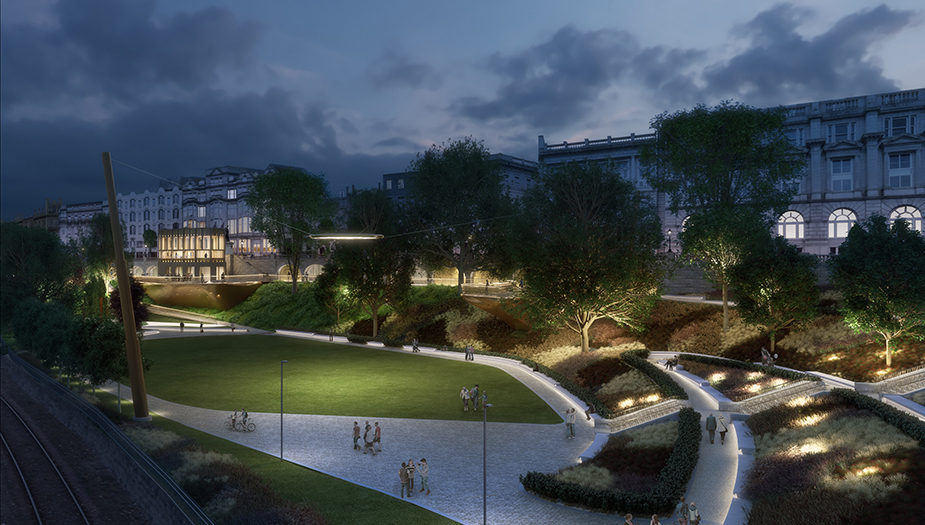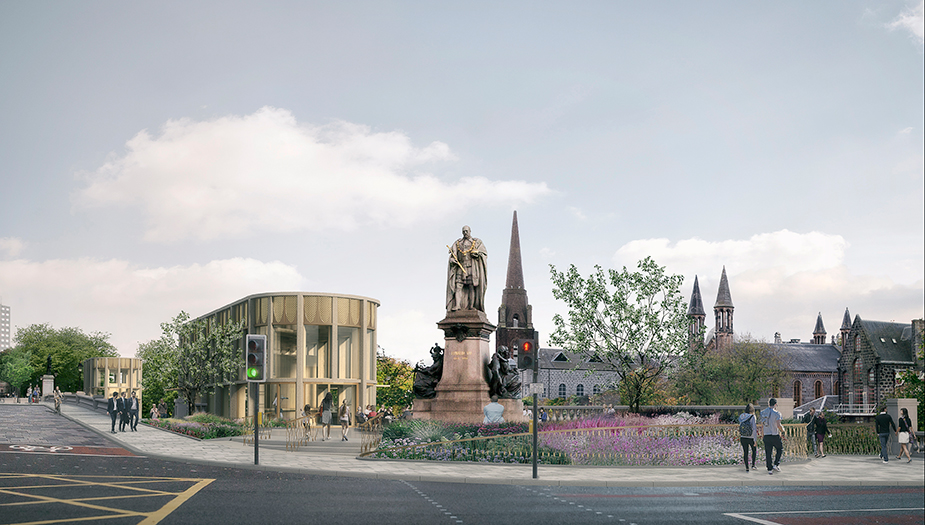Five takeaways from RTPI Scotland’s annual conference in Aberdeen

This October was the Royal Town Planning Institute (RTPI) annual conference in Aberdeen, Scotland, surrounding the theme of 'Target Net Zero'. A variety of approaches were discussed at the event, drawing on lessons applied across Scotland. The following are five things we learned from attending the conference.
1. Decarbonising Scotland’s places require bold ambition across our towns and cities
Claire McArthur delivered a talk about Aberdeen City Council’s bold ambitions towards a net zero economy. Beyond their local development plan, Aberdeen City Council has co-created a climate adaptation framework with 24 local organisations to shape the transition towards a low-carbon economy. All have collectively signed up to the Net Zero Aberdeen Routemap.
The scale of transformation underway in Aberdeen is impressive. Public realm improvements aim to transform swathes of the town centre into a more walkable city, reconnecting the centre with Aberdeen’s beach. These improvements were already visible in the Union Terrace Gardens, recently re-landscaped into a fully accessible amphitheatre-shaped garden. Elsewhere, plans are underway for new woodland around the beach.

2. Scotland’s leading role in renewables
No country has completed its net zero journey, but Scotland can take a leadership role around its place-based approach to renewables. Architecture and Design Scotland board member and lecturer at Dundee University, Kirsty Macari facilitated a discussion on the future of renewables in Scotland.
Morag Watson, director of Scottish Renewables, highlighted how the target of 12 gigawatts of onshore wind power could require up to 6% of land to meet demands. Taking a whole-place approach is crucial to maintaining community buy-in to the project; Scottish Renewables’ current approach maintains a public approval rating of 80%.
3. Retrofitting first: an urgent step change
To meet our net zero climate goals, 80% of Scotland’s building stock needs to meet Energy Performance Certificate (EPC) ratings of C by 2045. The EPC shows a building’s energy efficiency and environmental impact for nearly all buildings in the UK. Scottish Government aims for all private rental buildings to be of a ‘C’ rating by 2028.
This burning challenge was highlighted in the panel discussion around ‘Future Buildings’, which discussed the kinds of incentives needed to meet this standard.
The panel discussion and Cheryl Robert’s talk around ‘Fraserburgh 2021’ highlighted how a retrofit-first approach is crucial to building climate resilience in Scotland. A vital process for the regeneration of Scotland’s historic town centres.
At Fraserburgh, the community’s strategy for regeneration focussed on the heritage of the town and its existing assets. Initial research found the town suffered from poor employment opportunities for young people, a lack of visitor accommodation and a poor standard of the public realm. Retrofitting key sites and shop fronts addressed these issues, both by providing training opportunities as well as reinvigorating the town centre.
4. Many young planners are motivated by net zero ambitions
RTPI Scotland’s young planner of the year Rhiannon Moore delivered a talk on the profession’s cultural shifts. As climate change is taking a more prominent position in planning course curricula, an increasing number of planners are driven by a desire to combat climate change. Many welcome the ambitious net zero targets and are seeking means of driving the step changes needed.
Net zero targets aside, the Scottish planning system faces challenges in promoting the planning profession to new recruits. And retaining existing staff within local authorities and public sector bodies. RTPI’s research in the Future Planners Project notes that Scotland’s planning authorities need to recruit around 700 new staff over 10 to 15 years to meet statutory functions. It is this emerging generation of planning professionals who should lead the changes
‘Planning authorities are already operating in an environment of continued budget cuts, increased complexity within the planning system, and an increase in the number of statutory planning duties, whilst also struggling to recruit and retain qualified and skilled staff.’
5. Better storytelling around ‘net zero places’
Finally, Irene Beautyman, Improvement Service, led a panel discussion around the future of our places needed to shape sustainable places across Scotland. For the Scottish Government to meet its ambitious 20-minute neighbourhood policy goals, a culture shift in how and where we plan for new places needs to take place.
Caroline Brown, Associate Professor of Heriot Watt University, highlighted the need to tailor storytelling around net zero places to audiences; it’s not enough to stress the long-term benefits of climate resilience. Focusing on health and wellbeing can be more helpful to different stakeholders.
“The goals can be the same but we need to fit our approach with the audience.”
Some examples of our work around storytelling approaches around climate include the following events:
Our work towards Scotland's Net Zero target
We also provide support towards reaching Scotland's Net Zero targets through our projects such as:
Header image credit: LDA Design
